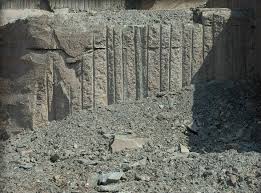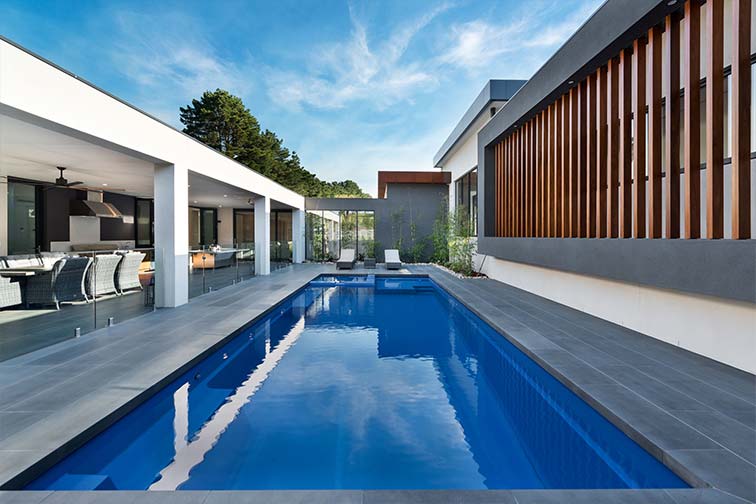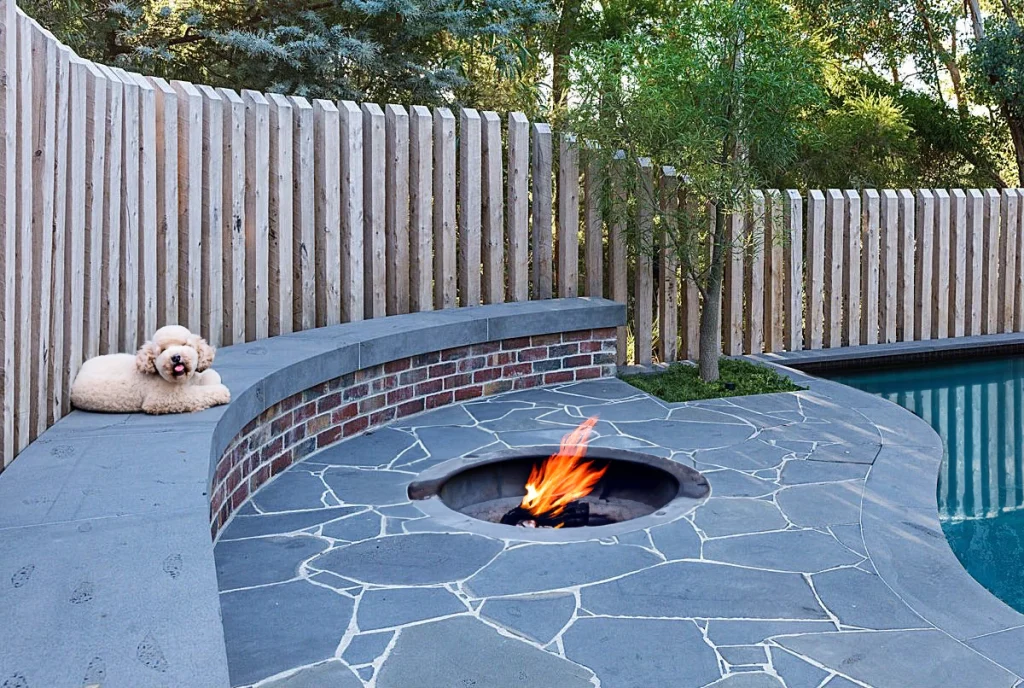What is Bluestone?
Bluestone is a striking volcanic basalt rock that originates from the solidification of cooled lava. In Australia, the term “bluestone” is predominantly used to describe this unique basalt, particularly that which is quarried from the rich geological deposits found primarily in Victoria. This durable and aesthetically appealing stone has become synonymous with Australian architecture and landscaping, prized for its deep blue-gray hues and remarkable resilience.

Characteristics of Bluestone
- Composition and Formation: Bluestone primarily consists of basalt, formed from the solidification of molten lava. The high iron content in basalt gives the stone its characteristic blue-gray color, which can vary depending on the region of origin. Fossils and minerals may also be present, adding to its unique texture.
- Durability: Bluestone is highly resistant to wear and tear, making it suitable for high-traffic areas. Its strength allows it to withstand harsh weather conditions, including extreme heat and cold, making it a reliable choice for outdoor applications.
- Porosity: Despite being a dense stone, bluestone is somewhat porous. This characteristic can help with drainage when used in outdoor settings, but it should be sealed properly to prevent staining and water absorption.
Bluestone Pavers: The Demand in Australia
The demand for bluestone pavers in Australia has been on the rise, driven by the growing trend of outdoor living spaces and the need for durable yet aesthetically pleasing materials. Here are some insights into the current market trends and applications:
- Non-Slip Surface: One of the most significant advantages of bluestone pavers is their non-slip surface, making them an excellent choice for pool areas and outdoor pathways. The textured finish of bluestone provides traction, reducing the risk of slips and falls, which is particularly important in wet conditions.
- Cat’s Paw Finish: A popular finish for bluestone pavers is the “cat’s paw” texture, which enhances the stone’s non-slip properties while providing a rustic, natural look. This finish is especially favored in residential landscaping, where homeowners seek both safety and aesthetics.
- Ideal for Outdoor Applications: Bluestone is perfect for a variety of outdoor applications, including patios, walkways, and driveways. Its natural beauty and durability make it a preferred choice for homeowners and landscapers alike.
- Pool Pavers and Pool Coping: The non-slip nature of bluestone makes it an ideal material for pool pavers and coping. It can withstand the moisture from splashing and poolside activities while providing a cohesive and stylish look that complements the surrounding landscape.



Statistics and Facts
- Market Growth: The Australian stone market, particularly for natural stones like bluestone, has been experiencing steady growth, with a projected increase of approximately 4% annually through 2025, according to industry reports.
- Sustainability: Bluestone is a sustainable material, as it is a natural stone that requires minimal processing. Many manufacturers focus on eco-friendly practices, ensuring that the extraction and production processes have a minimal environmental impact.
- Versatility: Bluestone pavers can be used in various formats, including slabs, tiles, and custom sizes, catering to diverse design needs. This versatility contributes to its popularity in both residential and commercial projects.
- Aesthetic Appeal: The distinct blue-gray tones of bluestone provide a timeless aesthetic that can enhance both modern and traditional designs. Its ability to blend with different landscaping elements makes it a favored choice among architects and designers.
Conclusion
Bluestone is more than just a visually appealing stone; its durability, non-slip characteristics, and versatility make it an ideal choice for a wide range of outdoor applications in Australia. The growing demand for bluestone pavers reflects a broader trend toward creating functional and beautiful outdoor spaces. As homeowners continue to prioritize safety and aesthetics, bluestone’s role in landscaping and construction is set to remain prominent in the years to come.
Related articles:
The Pros and cons of bluestone pavers
How to install bluestone pavers?



